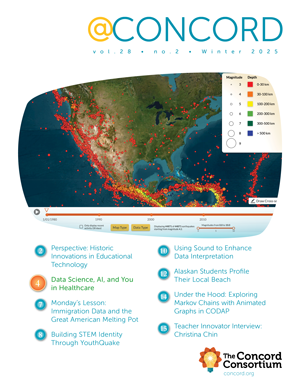Innovator Interview: Chris Hart
 Sitting at home in Birmingham, England, in 2009, Chris Hart made plans to move her family and her life to Boston. She had never even been to New England before, but as an avid video game enthusiast, she was accustomed to visiting unseen worlds.
Sitting at home in Birmingham, England, in 2009, Chris Hart made plans to move her family and her life to Boston. She had never even been to New England before, but as an avid video game enthusiast, she was accustomed to visiting unseen worlds.
Second Life is where she met up with a husband-and-wife team of developers interested in the potential of virtual worlds for education. She brainstormed with their avatars, and together they decided to found a startup. Using Open Simulator, an open-source code base written in C# that emulated the same communication interface as Second Life, they rented virtual spaces to educators and businesses.
“One group was doing role play. Another was focused on art with a virtual gallery, while yet another taught about the solar system,” Chris recalls. She learned from a teacher about a group of students who had built castles in their 256 cubic meter grid in the virtual world. Some students who had never answered questions in class became leaders of their online groups. That’s when she knew all her hard work was worthwhile.
“Open Simulator was very much alpha, so it crashed a lot,” she explains. “We spent a lot of time keeping it running. It was fun, but not profitable.” After two years of development, Chris built a virtual world platform using the Unity game engine, bringing virtual worlds and multiplayer serious games to the Web. “Installing custom software and reconfiguring firewalls just isn’t possible in many locations, so we worked to lower the entry bar to virtual collaboration.”
After four years, and now firmly settled in the States, Chris moved to a Boston-area startup developing map-based visualizations focused on agriculture data, then to a local video game studio, before joining the Concord Consortium in 2016.
It’s no surprise that Chris has made a career in software development. Her father bought her an Atari 65XE when she was ten years old, and she read the manual cover to cover. Then when she twisted her ankle in elementary school and couldn’t play netball, she took computer classes. She credits her interest in computers to this inauspicious beginning.
After college, Chris worked her way into IT, starting out by selling computer training. A core part of her work turned out to be learning how to build networks. More on-the-job IT training came from editing technical books at Wrox Press. She learned ADO, the data access platform, by editing a manual and testing the code. When Microsoft.NET launched, she got her feet wet with a new programming framework and language while editing a book on ASP.NET when it was still known as ASP+. “The work was intense and really good fun,” she says. “You don’t realize how quickly you can master a new topic until you’re forced to edit a book on it in six weeks.”
At the Concord Consortium, Chris has worked on programming augmented reality simulations (see “Under the Hood: Hands-on Interactive Activities with Leap Motion” in the Fall 2016 @Concord), created simulations for museum exhibits and other out-of-school platforms, and most recently has worked on an early-stage prototype Virtual Reality version of our Next-Generation Molecular Workbench. “I love the way you can play around with micro and macro scale simulations and concepts that you can’t see in real world,” she explains. “It’s all about playing with the impossible, and I’m excited about giving young people an appreciation and excitement for how the world works.”
Chris takes her love of virtual worlds home with her, too. She plays social co-op and role-playing games on her HTC VIVE, where she continues to make online friends. They laugh and talk about their day as they battle together in sites unseen in the real world.
